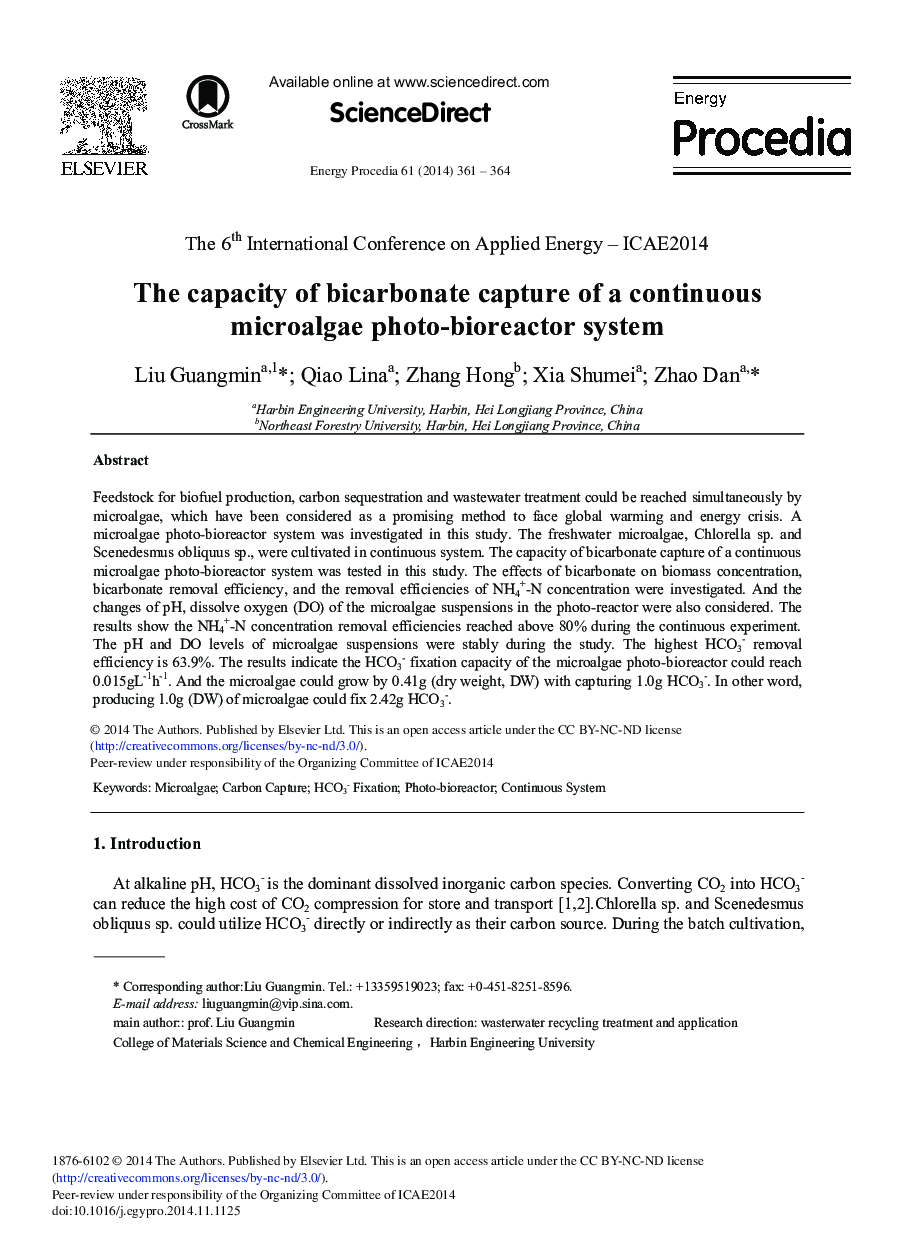| Article ID | Journal | Published Year | Pages | File Type |
|---|---|---|---|---|
| 1510514 | Energy Procedia | 2014 | 4 Pages |
Feedstock for biofuel production, carbon sequestration and wastewater treatment could be reached simultaneously by microalgae, which have been considered as a promising method to face global warming and energy crisis. A microalgae photo-bioreactor system was investigated in this study. The freshwater microalgae, Chlorella sp. and Scenedesmus obliquus sp., were cultivated in continuous system. The capacity of bicarbonate capture of a continuous microalgae photo-bioreactor system was tested in this study. The effects of bicarbonate on biomass concentration, bicarbonate removal efficiency, and the removal efficiencies of NH4+-N concentration were investigated. And the changes of pH, dissolve oxygen (DO) of the microalgae suspensions in the photo-reactor were also considered. The results show the NH4+-N concentration removal efficiencies reached above 80% during the continuous experiment. The pH and DO levels of microalgae suspensions were stably during the study. The highest HCO3− removal efficiency is 63.9%. The results indicate the HCO3− fixation capacity of the microalgae photo-bioreactor could reach 0.015gL-1h-1. And the microalgae could grow by 0.41 g (dry weight, DW) with capturing 1.0 g HCO3−. In other word, producing 1.0 g (DW) of microalgae could fix 2.42 g HCO3−.
